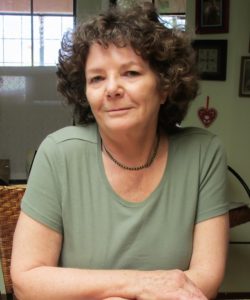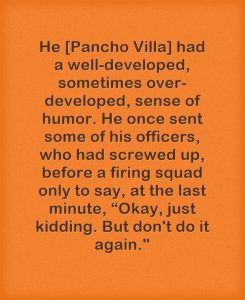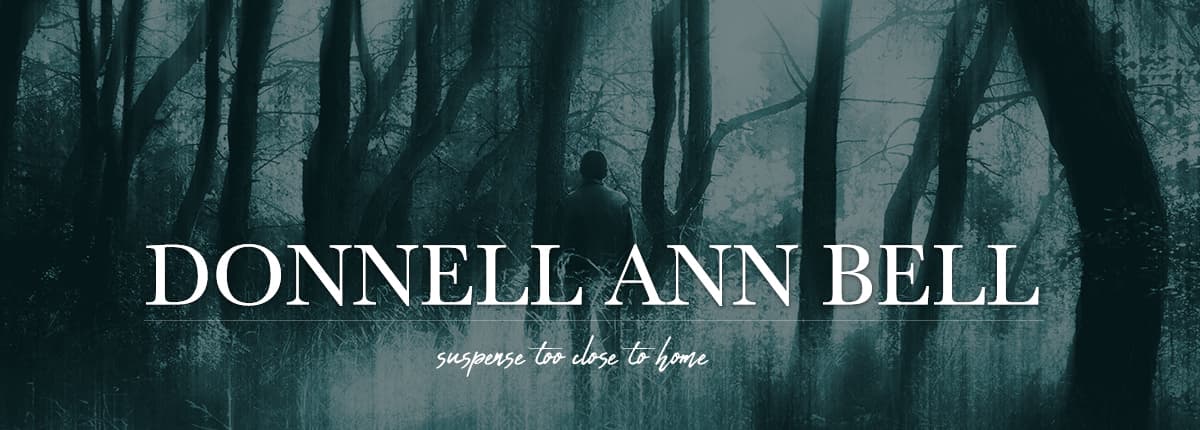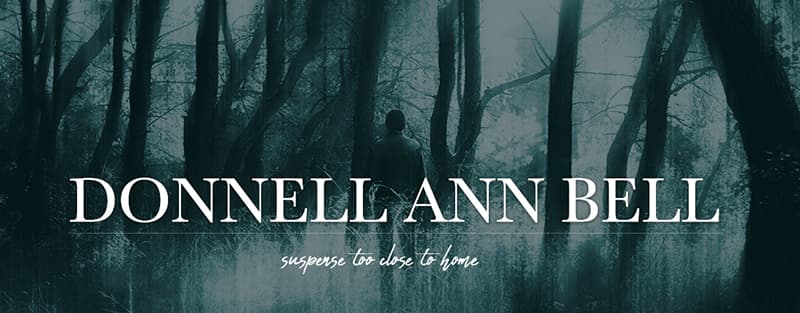
Friends, today I am particularly honored and excited to introduce to you my neighbor and fellow Sisters in Crime author Sandra Marshall. To find an author who lives only a few miles from me is a wonderful coincidence. Add expertise and talent, I consider myself doubly fortunate. Please welcome Sandra Marshall to Help From My Friends Friday. ~ Donnell

Author Sandra Marshall
Thank you, Donnell. I’m so glad you liked Death in the Time of Pancho Villa, and happy to be talking with you about it.
Donnell: Sandra, I was immediately engaged in your opening and introduction of your protagonist Mrs. Rose Westmoreland. As a reader I was firmly back in May 1, 1911. First question: How many books have you written, and are they all historical in nature?
Sandra: This is my first novel. I’ve co-authored two other books: Historic Architecture Styles, Las Cruces, New Mexico, Celebrating 150 Years, and Images of America: St. Louis Olympics, 1904 with my husband George Matthews. Both are history books for a popular audience and quite different from Pancho Villa.
Donnell: Rose’s husband has gone missing and the very heroic Rose is out to find him. Not many 26-year-old women of that era would have ventured out alone in a familiar setting, much less taken a train from Ohio to El Paso. What inspired you to write this book?
Sandra: I had earlier worked on a story set in 1920s California which never quite came together. I couldn’t persuade any of my characters to do the murder. It occurred to me, when we moved back to New Mexico, that El Paso was an interesting place to put a young woman protagonist, and an exciting time would be in May 1911, on the eve of the battle of Juárez, just across the Rio Grande. I needed a good reason for her to be there and I didn’t want to saddle her with a disapproving husband or boyfriend, so I made her husband disappear and sent her after him. Plus, El Paso is only forty-five minutes from home and handy for research. Those were the basic ideas, but I didn’t know exactly what would happen until I started writing.
Donnell: Rose enjoys an occupation uncommon for women of the time. I see that you and your protagonist share the same passion. I thought it was ingenious how that occupation played right into an introduction with the notorious General Villa. Will you tell readers about that profession?
Sandra: Rose is a talented and passionate photographer, but at this point still an amateur. She’s traveling light on her way to El Paso, but still brings her camera, extra glass plates, and a folding tripod. Having Rose look at what is, to her, a slightly exotic city was intriguing. And it’s a skill that can get her into situations that might be a stretch otherwise.
There were quite a few women photographers in the late 1800s and early 1900s, although not as many women as men were professionals. Historians only started paying attention in the last twenty years or so. Esther Lovell, who becomes a friend of Rose, was a real person whose special interest was domestic scenes, women and children, subjects that were neglected by most male photographers. Her photos are a gold mine for researchers.
Donnell: Rose arrives in El Paso at a particularly dangerous time and lodging is difficult. You write Firing squads sell like hotcakes of the imminent revolutionary war between Madero and Mexican Federales. This book seems rich in details and accuracy. Did the Sheldon hotel exist? Is it true newspapers such as the El Paso Morning Times published four issues a day?
Sandra: The Sheldon Hotel stood in the heart of town,  catty-corner from San Jacinto Plaza, and was a favorite of visiting journalists. The real Tim Turner hung out in the lobby and downstairs café. The Sheldon burned down in 1929 and was replaced by the El Paso Hilton, where Elizabeth Taylor spent the first of many honeymoons. Pancho Villa preferred the Roma Hotel, where he would sit in the Emporium Bar sipping strawberry soda.
catty-corner from San Jacinto Plaza, and was a favorite of visiting journalists. The real Tim Turner hung out in the lobby and downstairs café. The Sheldon burned down in 1929 and was replaced by the El Paso Hilton, where Elizabeth Taylor spent the first of many honeymoons. Pancho Villa preferred the Roma Hotel, where he would sit in the Emporium Bar sipping strawberry soda.
Major newspapers sometimes had as many as four editions. The early edition was printed before midnight and sold to people going to work on early shifts or late night partiers heading home. Morning and evening editions were delivered to subscribers as well as sold on the street, and afternoon editions only on the street. The Associated Press sent out news by telegraph, but only one paper in each city was allowed a subscription. That paper got the latest news first and was the one with more than one or two editions. It wasn’t as hard as it might seem to get that many sheets on the street. New lead stories would be added, old ones cut out, and blocks of type moved around to make space. Sometimes this created screwy chronologies on the same front page. Only one mostly new version came out each day.
Donnell: Rose is not welcomed warmly at first. I admired her manners and style as she confronts the hotel clerk who in turn gives her sound advice before looking for a suitable “boarding house.” Rose meets two memorable secondary characters. I felt Rose Westmoreland had something in common with these two as far as forced independence and entrepreneurial spirit. Was this deliberate? Something you discovered while writing?
Sandra: Forced independence is exactly what happened to all of these women. But when they found themselves without a man to rely on, they chose to take care of themselves, with a little help from their friends. I imagined each would have a rebellious streak: Marty had been an actress, a profession considered, by some, little better than a courtesan; Luisa set out on her own rather than accept her family’s condemnation; and Rose couldn’t let propriety and the others’ assumptions keep her from finding out what she needed to know.
This is what I started with, but their backstories, and their pragmatic, flexible, and sometimes very funny methods of coping in what was a man’s world, all this they revealed to me as I wrote.
Donnell: I knew something of Pancho Villa from my reading and El Paso podcasts. You brought him to life. Could you tell readers about his “Main” wife? As a researcher, what did you think of him?
Sandra: Luz Corral de Villa must have been a strong and determined woman. She looks totally confident and self-possessed in her photographs. She owned five diamond rings, and wore a double gold chain with an attached watch, and earrings set with brilliants. We know they were formally married in 1911. The legal status of Villa’s other “wives” is problematical. A subsidiary “wife” and her infant son lived just two blocks up the street from Luz Corral. Luz and Villa were together until his assassination in 1923. She inherited the house and the shot up Dodge he died in.
Villa was a complex, and perplexing character. He could be very charming. Ladies certainly liked him. He had a well-developed, sometimes over-developed, sense of humor. He once sent some of his officers, who had screwed up, before a firing squad only to say, at the last minute, “Okay, just kidding. But don’t do it again.” He also had a quick and uncontrollable temper, several times killing the person who had set him off. At other times he was solicitous of the women and children his army encountered. Unlike most men of the period he was a teetotaler and didn’t tolerate drunkenness in his troops. I suspect he was personally very easy to like, although some of his actions are shocking and appalling.
Donnell: Rose meets reporter Tim Turner during her stay in El Paso. Their friendship, chemistry, and teamwork were palpable on the pages. She meets him while trying to capture a picture of alligators. Alligators in El Paso? Where did this scene come from? Was that purely imagination or based on fact?
Sandra: The alligators were real enough. There are various versions of how the alligators got to the pond in the middle of San Jacinto Plaza in the 1880s. They were there until 1965, when they were moved to the zoo for their own protection. I remember, as a small child, the year my family lived in El Paso, peering over the wall to watch them. Occasionally, one would blink or move a foot. El Paso native, sculptor Luis Jiménez, also remembered them from his childhood. After they were removed, he created a great pile of fiberglass alligators for the Plaza. Jiménez was later murdered by his last sculpture, “Blue Mustang,” that jumped on him (or maybe just fell) severing an artery in his leg. The giant blue horse, with eyes that glow red at night, now lives at the Denver airport. The locals nicknamed him “Blucifer.”
Turner was about twenty-three-years-old in 1911, a serious journalist but also looking for adventure before settling down. Always the observer, his wit and ironic outlook came through in his memoir of covering the Mexican Revolution, Bullets, Bottles and Gardenias. I enjoyed working with his character. He would have found Luis Jiménez’s death sad, but ironic.
Donnell: Then of course Rose becomes an amateur sleuth in the search for her husband who works for an oil company out to profit from the revolution. What a history lesson. Did you use fictitious names for these companies? Did your research lead you to believe people typically disappeared?
Sandra: There was a fierce competition between international oil companies, especially those of Britain and the U. S., for lucrative drilling rights in Mexico. The rumor that Standard Oil, America’s giant, offered to fund the Revolution in exchange for favorable access has been speculated about for a hundred years. Was it true, and, if so, who was the agent sent to make the offer? Because that company name is still trademarked by the corporation it became, (Big E, double-X, O, N) my publisher suggested I give my company a fictitious name. So, it is Stoneman Petroleum. Stone, like “rock,” and man, like “a feller.”
It was my husband’s research on Billy the Kid that revealed how often people came West to disappear and start over, sometimes more than once; fleeing bad financial or personal situations, wanted for a crime, or, like the American mercenaries fighting with Villa said, “For the hell of it.” Even some women changed their names and started over. Several successful madams did this, and even more of the common prostitutes that came to sad ends. But other women found husbands, or homesteads, or other business opportunities. Asked why, they might have answered, “I don’t know what I’ll get, but I know what I had.”
Donnell: There were so many amazing scenes in Death in the Time of Pancho Villa. When Villa and Orozco hide in the boarding house,I was touched by their kindness toward Luisa. My favorite, though, had to be the rooftop scene over the Chinese laundry. In very tight writing, you address nonexistent child labor laws and working conditions, diversity of the city, how close the city of Juarez is to the city of El Paso, and the risk people took to witness this battle—some for sheer entertainment value. How much of this is fact incorporated into fiction?
Sandra: A lot of it. I don’t know, of course, if the laundry sold tickets, or exactly what the interior looked like, or the name of the owner. And no one was shot on the roof, although at least six people in El Paso were killed by stray bullets. But there was a significant Chinese community. The El Paso Laundry building still exists and is, I have heard, the only place where you can still see bullet holes in the walls. It was the best place to watch from, although hotels, including the Sheldon, let people watch from the roofs. Some charged admission of up to a dollar. A lot of people crowded on the tops of boxcars lined up along the railroad tracks on the south end of town. A really stupid idea. They acted as if they were watching a pageant instead of a battle.
Donnell: Finally, it wouldn’t be a book about El Paso without Spanish dialogue, the culture, and of, course, the hot weather. Personally, I don’t think you had to do that much research on the weather. ? Are you bilingual? What was your greatest joy in writing this book and what was your greatest takeaway? I also thought this book had series potential. I’d love to see Mrs. Westmoreland again. She certainly doesn’t belong in Ohio! Any interest?
Sandra: No, I’m not bilingual, though I wish I were. Like Rose, I’m picking it up as I go along. But when my life becomes a little less hectic (!), I want to study it properly. Fortunately, I have friends in both of my writing groups who are fluent Spanish speakers. They generously correct my grammar, find lost accent marks, and otherwise keep me from making, stupid mistakes. I couldn’t do it without them.
My greatest joy was when my characters started talking to me. I had no fixed ideas about them when I started, except in a very general way. I didn’t know how determined, caring, creepy, or really funny they were until I started writing.
My greatest take away was learning to believe in myself and my people. I had to trust that even if I had only the barest idea of what happened next, once I sat down and started writing, my characters would start talking and a scene would grow. How does that happen? I don’t know. It’s certainly not cold determination. It’s more like magic.
I’m excited to find out what my people will do next. I’ve begun a sequel, called Death in the Parlor House, to come out this time next year. A parlor house was a fancy brothel. Rose is hired to take advertising photos of the ladies and a murder takes place.
Donnell, I’ve really enjoyed talking with you about my book. I hope your followers enjoy hearing about it. Thank you so much.
My absolute pleasure, Sandra. Best wishes on this book and the rest of the series!
About the Book: Death in the Time of Pancho Villa:
The in-laws were aghast when Rose Westmoreland boarded the train alone, bound for the far edge of the country, to find her missing husband. Unthinkable in 1911. Now she’s in El Paso, a city holding its breath, anticipating a spectacle. A decisive battle of the Mexican Revolution is about to erupt right across the Rio Grande. Husband Leonard, sent there by his employer Stoneman Petroleum, apparently first went native, then disappeared, leaving behind a firey rebel mistress and rumors he was sent to offer the rebels money in exchange for favorable drilling rights.
Alone in this liminal place, Rose is befriended by two women, a retired thespian and a young Mexican expatriate, who suggest coping methods that would throw the folks back in Shaker Heights into a tizzy. A reporter recruits Rose, who is a talented amateur photographer, to immortalize the Mexican leaders: a sardonic, strawberry soda-sipping Pancho Villa and visionary Francisco Madero who communes with the shades of Napoleon and Beníto Juárez. Rose is caught up in the intrigues of the Revolution, the unfamiliar culture of the borderlands, and the deadly competition between international oil companies. When the only person to offer real information is killed by what is, perhaps, a stray bullet, she finds her own life in danger. While victory is celebrated across the river, Rose learns the truth about Leonard. But where one door closes, another opens, and on the border there are many doors.
About the Author: Sandra Marshall was raised in Texas. She holds degrees in anthropology and public history and had an extended career as an archaeologist and architectural historian, primarily in the American Southwest. Now a writer and photographer, she has settled in southern New Mexico with her husband, historian George Matthews, and tabby cat Fog. Recipient of the 2018 William F. Deeck-Malice Domestic Grant, she is a proud member of Sisters in Crime, Guppy and Croak and Dagger Chapters.











Wow! Such historical detail. Sounds like a captivating read. Thanks for the interview, Donnell. Very well done.
Fascinating historical detail. I”m looking forward to reading this one.
Wow, what fascinating subject matter! I love books where I learn a lot of history while at the same time enjoying a great story. 🙂
Definitely going to pick this one up! Congratulations on the book…I’m in love with all (nearly all) things Mexico, and related. Your time period is interesting, the research impressive. Buena suerte!!